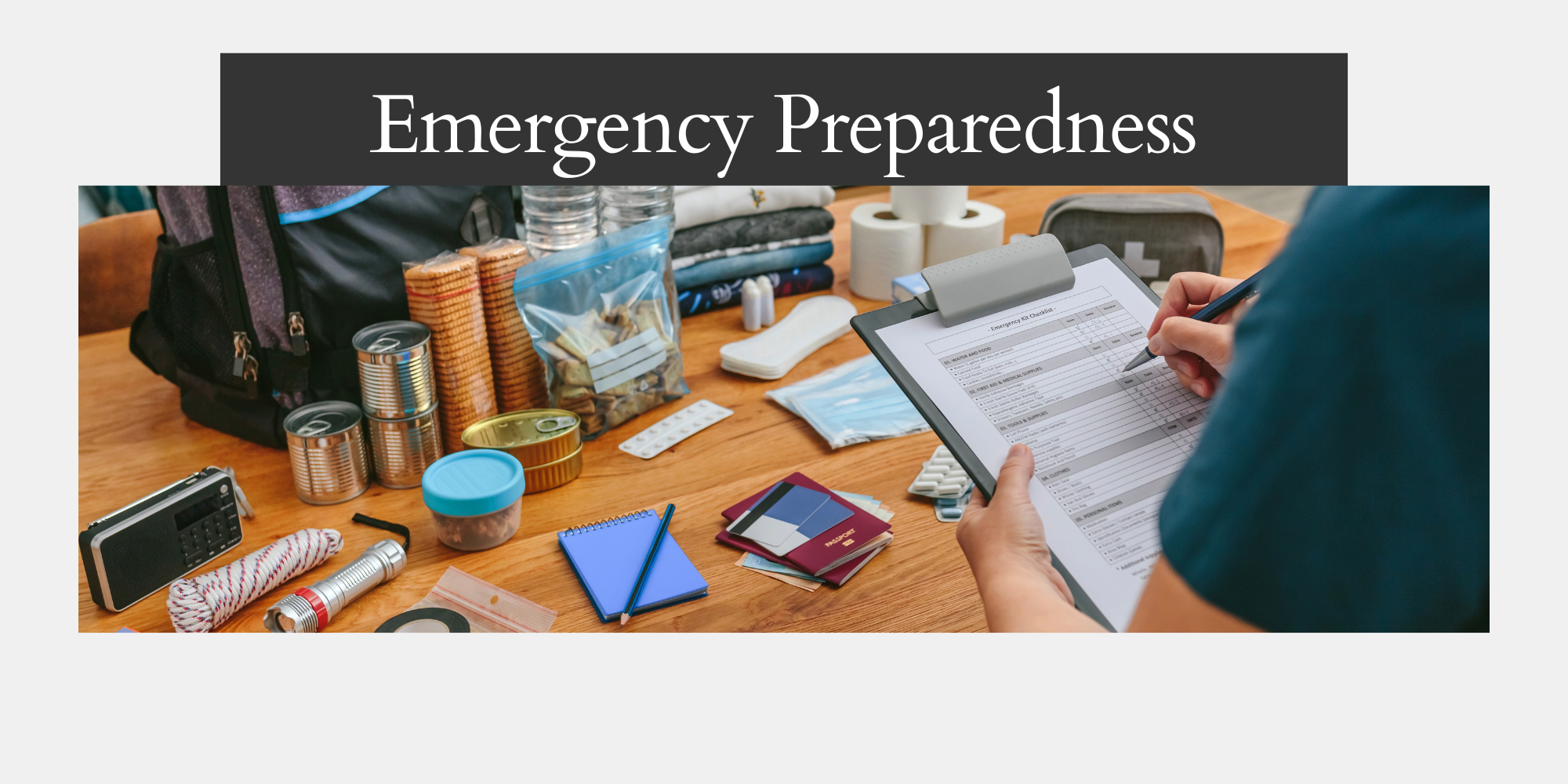Emergencies can strike at any time, whether it is a home fire, flood, earthquake, or medical emergency. It is important to have a plan. There are some simple steps you and your community can take to ensure you are prepared for any type of disaster.
Prepare an Emergency Kit
It is important to build an emergency kit that will last you a few days, in case of an emergency. You can find examples for items to put inside your kit on the Red Cross website.
Items should include:
-
- Water: one gallon per person, per day (3-day supply for evacuation, 2-week supply for home)
- Food: non-perishable, easy-to-prepare items (3-day supply for evacuation, 2-week supply for home)
- Flashlight
- Battery-powered or hand-crank radio (NOAA Weather Radio, if possible)
- Extra batteries
- First aid kit
- Medications (7-day supply recommended) and medical items
- Multi-purpose tool
- Sanitation and personal hygiene items
- Copies of personal documents (medication list and pertinent medical information, proof of address, deed/lease to home, passports, birth certificates, list of support needs)
- Cell phone with chargers
- Family and emergency contact information
- Extra cash
- Emergency blanket
- Map(s) of the area
It is important to make the kit your own and add additional supplies as needed for you. Some ideas may include extra batteries or power banks, paper copies of family and emergency contact information, extra socks, or additional food that meets your dietary requirements.
Make a Disaster Plan
Identify your support network and team to help you plan ahead, prepare, and assist you after a disaster.
Discuss with your team the types of emergencies that are most likely in the area where you live.
Make a plan for these disasters including:
- Escape Routes – If you or someone in your household uses a wheelchair, make exits from your home wheelchair accessible. Practice emergency evacuation drills at least two times a year, or any time you update your emergency plan or change the layout of your home’s furniture. Be sure to include family and/or your personal care attendant in the drills. Consider how you will evacuate from your room if you cannot go through the door and ensure all windows are not blocked in case of emergency evacuation.
- Where to meet – Find a safe location away from the home and make a plan with your supports to meet there so you can all find one another safely.
- Communication – How will you contact your supports or family if separated? Make sure you have a list of names and contact information.
- Where you will stay if you cannot return home and how you will get there – Many communities will have shelters in the event of disasters, however they may not be open to pets, or be accessible for all needs. You can call 211 to find a list of shelters near you.
Consider your specific needs, such as if you need to ensure the evacuation route is wheelchair accessible. Consider your pets and service animals and include caring for them in your plan.
Stay Informed
Identify how you will get information in the event of emergency. Many communities have local emergency alert systems. See the links below for alert systems for your county.
Follow instructions from authorities, including when to evacuate.

